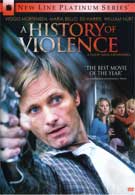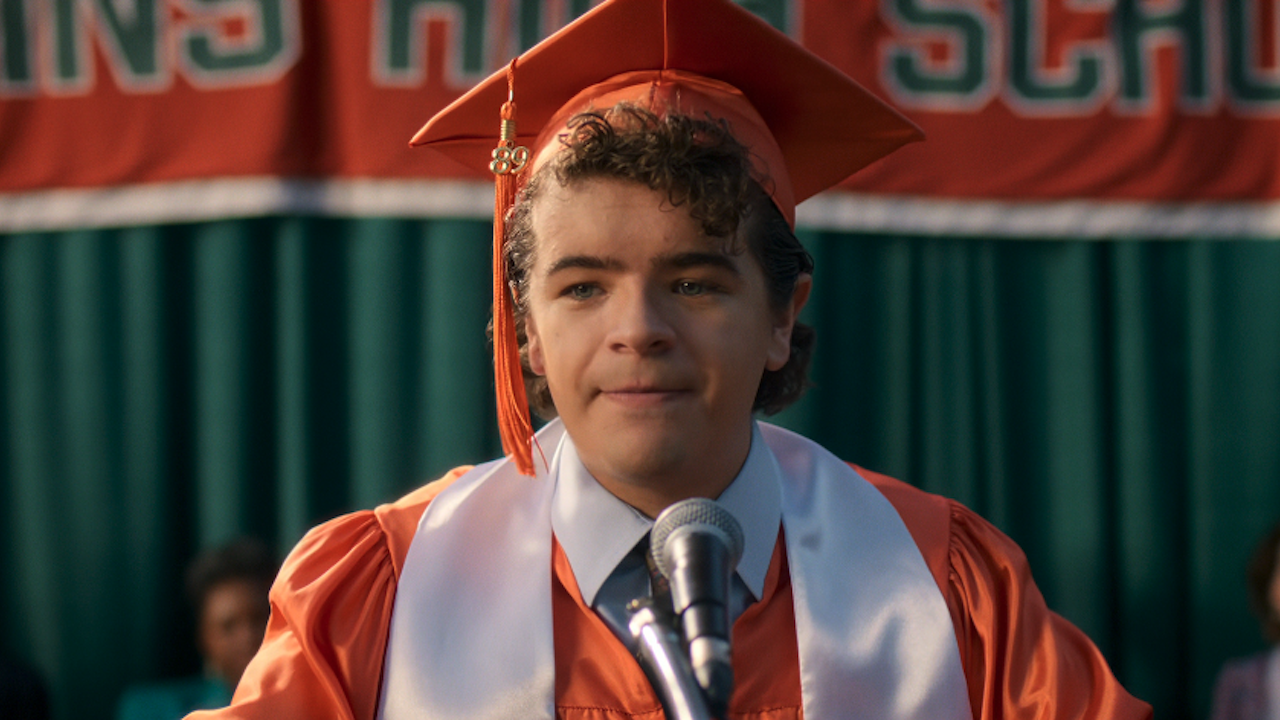When David Cronenberg set out to find the perfect cast for A History of Violence he wound up with the right group: Viggo Mortensen, Ed Harris, and Maria Bello. Where the film falls short, sadly, is in the characters themselves. Tom Stall (Mortensen), owner of Stall’s Diner, has tried to erase his past for so long that when it comes knocking on his door he honestly doesn’t remember it. His job now is to either fight reality or continue to deny it. The premise of the movie is beautiful. The idea that an “average” man, when faced with a situation where he defends himself and others, becomes a hero for killing. This is actually a great notion because more often than not these days the “bad guys” and the “good guys” in film and on TV all fight with guns and other weapons. Cronenberg challenges the idea of the “hero” image as well as weaves into the story that Viggo’s character used to be one of the “bad guys”. The question then is: who do we root for? The good guy is the bad guy and vise versa.
Knowing Tom Stall is now considered a hero for murdering someone, his family is thrown into a position of wanting to support him and at the same time feeling conflicted about his actions. Then Ed Harris comes into the diner to confirm Mortensen’s violent nature. Harris says Stall is really someone named Joey from the past. Tom denys it. This goes on for quite some time. Finally Tom does some more damage and confesses about his past. At this point his wife, played by Bello, freaks out again.
Where A History of Violence doesn’t work is in its characterizations. Everything is a little too supportive or a little too opposed. We don’t see very many genuine conversations, just quick actions. We want to know what Tom’s wife is thinking and all we see is her either acting nice (i.e. sex) or yelling at Tom, trying to hit him, or generally trying to protect her children from everyone else in the film. Basically, she’s a loose cannon and Viggo doesn’t give much of a fight before he admits he is the guy Harris says he is. She hates him one minute and the next she’s screaming because she doesn’t want him to get hurt. Don’t get me wrong, I understand a well-rounded character would feel both ways about the situation, but I have to know her reasons, not just see her actions.
So, sure there are some interesting sex scenes, some fight sequences, and great top-notch acting, directing, and editing, (Ed Harris is, like always, terrific and strong) but the film as a whole just doesn’t come across with all the momentum it could have displayed. We should have seen more interactions between Viggo and the kids, more of a fatherly presence. Another aspect that would have aided the film is to have more knowledge of who Tom “was” in the past.
There’s a common saying in writer’s workshops of “show, don’t tell.” A History of Violence “tells” us that Tom really used to be Joey and that he was a bad man that did bad things, but it’s never shown to us. This makes it hard to get into the plot. At the point that we’re hearing about this Joey character, as viewers, we’re in the position to not believe it. Something great here would have been for Tom to have some kind of flashbacks or nightmares to give us a visual of who he was, coinciding with Tom remembering his past. If you really look at, there’s not much of the movie where we see Tom as a non-violent guy. Show us what makes Joey's violence different from Tom's.
A History of Violence has a lot going for it and it’s not often that you’re absolutely intrigued in a film and then feel only slightly gypped afterwards. Most of the time when you’re excited about a film you’re either completely blown away by it or you’re disappointed because it ended up being awful. With this film there’s a lot of good work, super acting, and a great plot line, we just need a little more. A History of Violence starts to lead us down a completely possible road and has the capability to pull off its story, but it falls short on Tom’s/Joey’s history. There was so much potential for this film, and so much more that could have been done for it. At just over an hour and a half, Cronenberg could have taken more time to thicken the story for us. Rather than shifting our weight in the seat for ninety-six minutes, we could have been glued to the screen for two hours; we just need more. As for the disc, I’m totally impressed with the extras here and for the first time ever think the extras for a DVD deserve more of a star rating than what the film received. The disc is packed and it’s not even a toot-your-own-horn two disc set. The disc is not just full, but the extras are all good. Too often everyone just throws their garbage on the disc just to be able to advertise special features, with History everything they gave us was important.
To start off there is a section titled “Acts of Violence” a beautiful, over an hour long look at the individual scenes (in order of appearance) that depict violence. The reason this section is great is because you get the opportunity to watch the filming, the brainstorming, and the blocking of these scenes. Each scene is taken apart and we’re shown how it was done, why it was done, or why they didn’t choose to show something. For those of us that not only want to like the movie but also want to know how they created the movie, this whole piece is great.
Your Daily Blend of Entertainment News
Next is the deleted scene, Scene 44. This scene would have been a dream for Viggo where Ed Harris is back at the diner and Viggo grabs his shotgun and blows Harris across the room. In the end, Cronenberg chose not to show this because it depicted violence in an entertaining and/or glorified light and that is not what the film is about. A smart, smart choice on his part. To coincide with this deleted scene we also get “The Unmaking of Scene 44” which shows how they shot the scene and includes the special effects they used to pull it off.
Following that is a look at the US version versus the International version, a side by side comparison of some of the scenes. The international scenes are actually gorier than the US ones and we’re given the chance to see the added blood spurts, twitches, and over all extra yuck involved in a couple of these scenes. I think it’s key for Cronenberg to want to avoid gratuitous violence but at the same time want to be realistic about what would happen. It takes a strong director to hold back and pull the reins a little even when the realm of possibility would provide for more fake blood, more explosions, more gun shots, etc.
After that, the section “Too Commercial for Cannes” shows a quick clip of Cronenberg saying that he was hoping that History would be too commercial for the Cannes film festival. The next set of clips then shows the cast, along with Cronenberg at Cannes, giving interviews, photo ops, and showing the film. This is a cool segment because it gives you a little more information about the movie without talking about the film anymore, but showing what happens with the people involved in it. This is especially important when you see Viggo’s shoulder length hair and handlebar mustache making him look like some kind of 70’s porn star in a film that could only be called The Matador.
Finally there’s a superb commentary by Cronenberg alone where you really find out just how good of a director he is. Everything he shoots is intentional and all serves a purpose. His voice is smooth and he continues pretty much nonstop talking about everything and giving extra information. I would have liked to have heard Viggo doing the commentary with him but I actually think by having Cronenberg alone you avoid any amount of joking around. Cronenberg was able to just talk to the viewers about the film and why he did what he did. To follow it up, even though the disc is already great, there are easter eggs on the disc that add that extra sense of play and goofing off. Even though the film didn’t exactly impress me the way I would have liked, the extras make the DVD worth a purchase instead of a rental.

